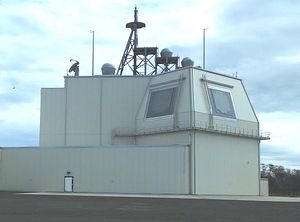Japan is set to expand its ballistic missile defense capabilities with Japanese Prime Minister Shinzo Abe’s Cabinet approving the procurement of two land-based Aegis Ashore missile defense systems on December 19, according to local media reports.
The two Aegis Ashore batteries, the land-based variant of the Aegis combat system, will strengthen Japanese defenses against China’s and North Korea’s growing ballistic and cruise missile arsenals. The government plans to deploy the two batteries by 2023 but has yet to make a decision on the locations of the new missile defense systems.
North Korea’s nuclear and missile development programs pose a particular threat to Japan’s national security. “North Korea’s nuclear missile development poses a new level of threat to Japan and as we have done in the past we will ensure that we are able to defend ourselves with a drastic improvement in ballistic missile defense,” Japanese Minister of Defense Itsunori Onodera told reporters in Tokyo today.
The cost for the two Aegis Ashore missile defense systems could exceed $2 billion.
“We cannot say what the final costs will be, but we will move ahead (to introduce Aegis Ashore) on the fastest possible schedule, given public calls that the government should deal as swiftly and urgently as possible with the ballistic missile defense issue,” Onodera said.
The Japanese government is still evaluating other options, including the possible acquisition of six Terminal High Altitude Area Defense (THAAD) batteries. However, the government concluded in an in-depth study earlier this year that the Aegis Ashore system is more cost effective for missile defense than THAAD.
The Aegis Ashore batteries will be armed with SM-3 Block IIA and SM-6 interceptors.
“Manufactured by U.S. defense contractor Raytheon, SM-6 is a supersonic (Mach 3.5+) missile interceptor with an estimated range of over 180 miles [289 kilometers],” I explained elsewhere. “The missile was originally designed for anti-air warfare and anti-surface warfare missions.”
The SM-3 Block IIA has been under joint development by Raytheon and Japan’s Mitsubishi Heavy Industries since 2006.
“It is designed to destroy short- to intermediate-range ballistic missile threats. The SM-3 has been successfully flight tested in February of this year when it destroyed a medium-range ballistic missile target,” I reported previously. “However, the missile failed another intercept test in June.”
According to some reports, the Aegis Ashore sites, however, will not be fitted with a powerful new air and missile defense radar, Raytheon’s AN/SPY-6(V), expected to be installed aboard U.S. Navy warships in the early 2020s.
This would mean that Aegis Ashore batteries would not be able to utilize the extended range of SM-3 Block IIA interceptors estimated to have a maximum operational range of 2,500 km (1,350 miles).
“In order for either missile to intercept a North Korean ballistic missile, the Aegis combat system would have to start tracking the missile in its ascent phase and launch interceptors before it overflies the Aegis ashore site,” I noted elsewhere. This all depends on the early detection of the missile.
The Aegis Ashore sites would supplement Patriot batteries capable of engaging short- and medium-range ballistic missiles in their terminal phase and Aegis-equipped guided-missile destroyers, of which the Japan Maritime Self-Defense Force (JMSDF) currently operates four, a number that is expected to increase to eight in the future.































